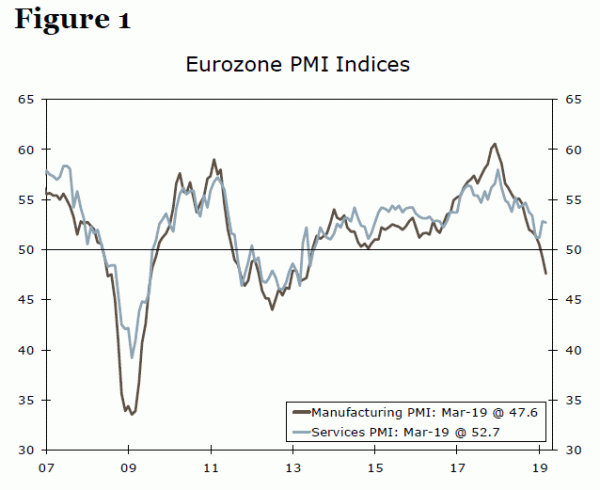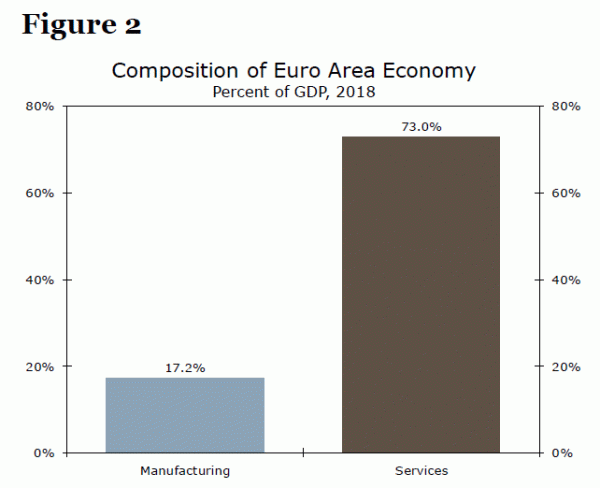Fears of a Eurozone recession are back in the headlines today after a series of disappointing PMI figures from the currency bloc. The March manufacturing PMI declined more than expected to 47.6, the lowest level since 2013 (Figure 1). Some individual countries fared even worse, as Germany’s manufacturing PMI plunged to 44.7. The weak data from Europe’s manufacturing sector have been piling up for months. Factory orders in the Eurozone have declined in eight of the past 12 months, while manufacturing output fell roughly 3% year-over-year in the three months through January. The continued decline in the manufacturing PMI in the first three months of 2019 suggest the weakness in the hard data for the sector probably persisted in the first quarter.
Fortunately, the Eurozone economy is primarily based on services, which account for roughly 75% of total value added in the economy, rather than manufacturing, which accounts for less than 20% (Figure 2). The services PMI for the overall Eurozone economy has been more resilient in recent months, recovering to 52.8 in February and edging only slightly lower in March to 52.7. A separate measure of confidence in the services sector published by the European Commission has also stabilized in recent months, while retail sales—arguably the most closely followed highfrequency measure of activity in the services sector—have also been fairly steady despite weakness in the manufacturing. Strong wage growth and low inflation are likely underpinning consumers in the Eurozone, and may remain a key element of the narrative of a resilient services sector.
Still, we find it hard to get excited about European economic prospects. Despite its relative resilience, the services PMI still remains low at just 52.7, while the composite PMI at 51.3 is consistent with GDP growth of just over 0.1% quarter-over-quarter. Preliminary Q1-GDP data for the Eurozone are not released until April 30, but a 0.1% quarter-over-quarter print would substantially raise the risk of a recession, particularly if the composite PMI were to fall even further. Our lack of enthusiasm for the Eurozone economy extends to the euro, as we currently look for the euro to remain essentially flat-line over the next few months. We still look for some modest euro gains by year-end and into 2020, but that view is predicated on the Eurozone economy avoiding recession and the European Central Bank eventually normalizing interest rates.

















